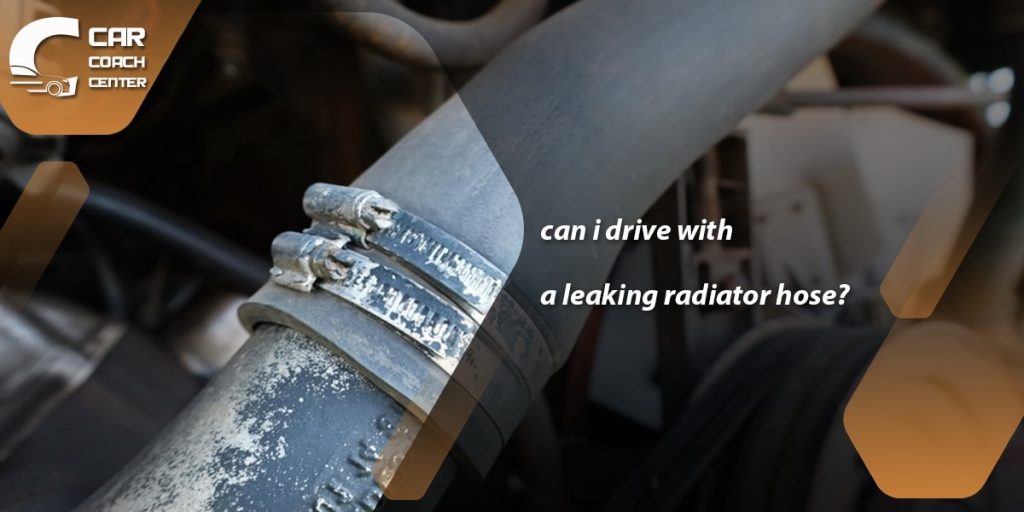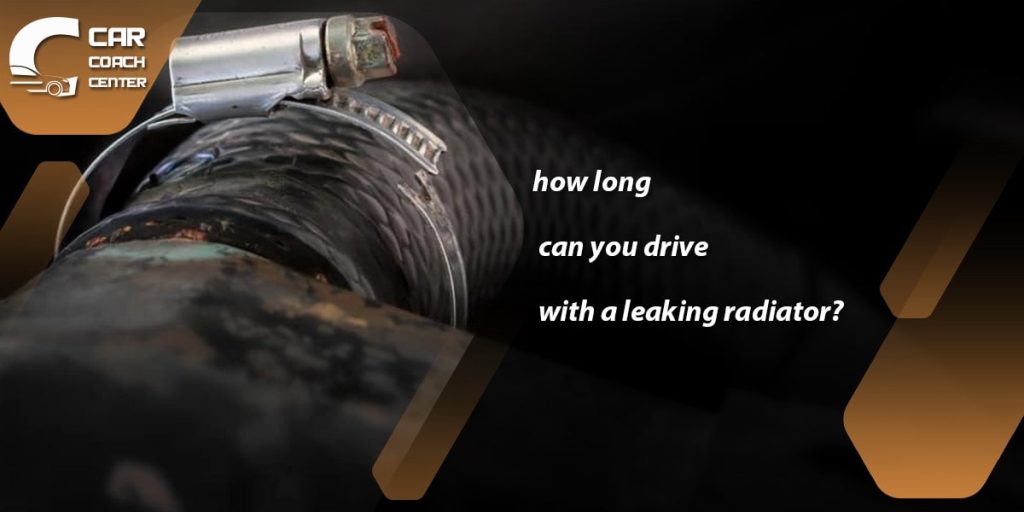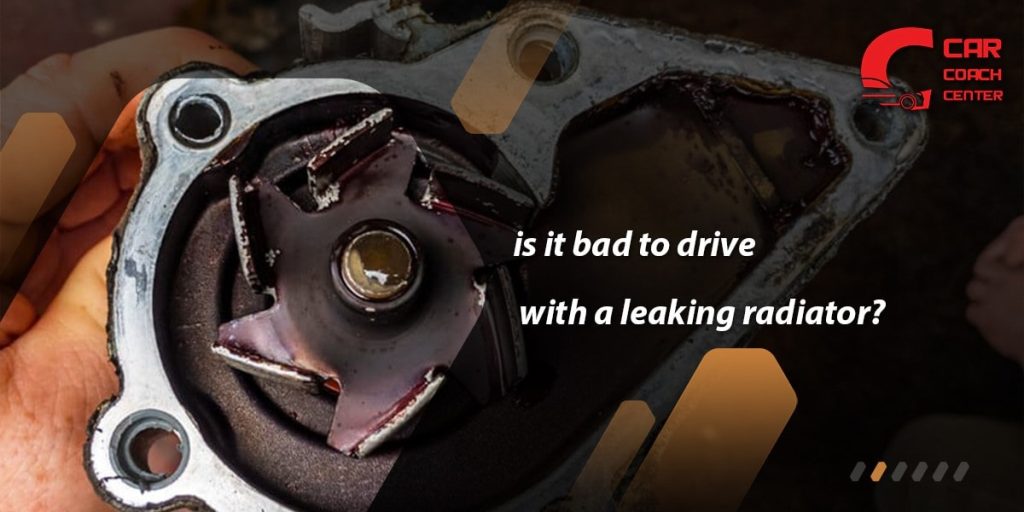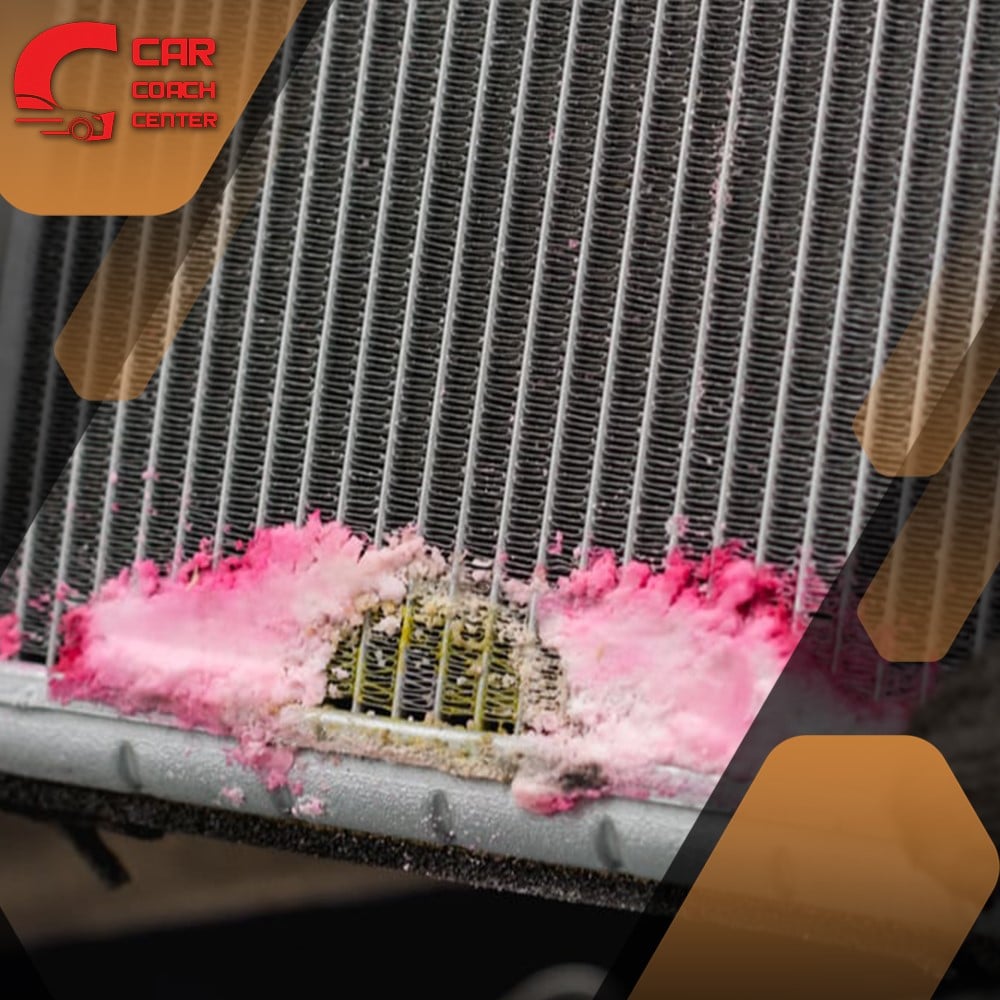Can You Drive With A Leaking Radiator
Driving a vehicle with a leaking radiator is a topic that raises questions and concerns among car owners. The radiator plays a crucial role in maintaining the optimal temperature of your engine, and any leak in this vital component can lead to a series of complications.
Understanding the consequences, identifying the source and severity of the leak, and taking appropriate action are essential steps in ensuring the health and longevity of your vehicle. In this article, we will delve into the world of leaking radiators, exploring the potential hazards and damages they can cause and providing insights into diagnosing the problem.

We will also discuss temporary fixes for emergencies, the risks associated with driving with a leaking radiator, the importance of timely repairs, and preventive maintenance tips to help you avoid radiator leaks altogether. So, let’s buckle up and embark on a journey to uncover the truth behind the question: Can you drive with a leaking radiator?
The Dripping Dilemma: Understanding the Consequences
A leaking radiator may seem minor initially, but the consequences can quickly escalate if left unattended. One of the primary concerns is the potential for engine overheating. The radiator is responsible for dissipating heat from the engine coolant, and when a leak occurs, the coolant level drops. Insufficient coolant circulation can significantly increase engine temperature, posing a serious risk to the health of your vehicle’s powerplant.
In addition to engine overheating, a leaking radiator can also compromise your car’s overall performance. As the coolant level decreases, the cooling efficiency decreases as well. This can result in reduced fuel efficiency, diminished power output, and even engine misfires. The delicate balance of the engine’s operating temperature is disrupted, leading to suboptimal performance and potential damage to engine components.
Another consequence of driving with a leaking radiator is the potential for coolant contamination. As coolant leaks out, air, dust, and other contaminants can enter the system, jeopardizing the integrity of the entire cooling system. Contaminated coolant loses effectiveness, increasing the likelihood of corrosion and clogs in the radiator, heater core, and other cooling system components. Over time, this can lead to costly repairs and even the need for a complete cooling system replacement.
Furthermore, neglecting a leaking radiator can have a cascading effect on other vital engine components. High engine temperatures can strain the water pump, thermostat, and head gasket, potentially leading to premature failure. The cost of repairing or replacing these components far outweighs the expense of addressing a leaking radiator promptly.
Diagnosing the Leak: Identifying the Source and Severity
When faced with a leaking radiator, it is important to identify the source and severity of the leak to determine the appropriate course of action. Here are some steps to help you diagnose the problem:
Visual Inspection
Start by visually inspecting the radiator and its surrounding components. Look for any signs of coolant dripping, wet spots, or stains on the radiator, hoses, and engine bay. Please pay attention to the radiator fins, which can sometimes develop small punctures or cracks.
Pressure Test
Perform a pressure test on the cooling system. This involves using a pressure tester to pressurize the system and check for any pressure drops. If the pressure drops rapidly, it indicates a significant leak in the radiator or another part of the cooling system.
Coolant Loss Observation
Monitor the coolant level over some time. If you consistently need to add coolant or notice a rapid decline in the level, it suggests a more severe leak. This may require immediate attention to prevent engine damage.
System Pressure Check
Use a cooling system pressure checker to examine the pressure levels when the engine is cold and reaches operating temperature. Significant variations in pressure readings can indicate a faulty radiator cap or a leak in the system.
Radiator Fin Inspection
Inspect the radiator fins for any signs of damage, such as bent or crushed fins. These can restrict airflow and lead to overheating, even without visible coolant leakage.
Professional Assistance
If you cannot identify the source or severity of the leak, it is recommended to seek the expertise of a professional mechanic. They have the tools and experience to diagnose thoroughly and provide accurate repair guidance.
Temporarily Patching It Up Quick Fixes for Emergency Situations
Finding yourself with a leaking radiator on the road can be a nerve-wracking experience. While a permanent repair should be your ultimate goal, a few temporary fixes can help you get to a safe location or a mechanic. Here are some quick fixes for emergencies:
Radiator Stop Leak Products
Radiator stop leak additives are available in the market and can temporarily solve small leaks. These products contain sealants that can flow through the cooling system and seal minor leaks. Follow the instructions on the packaging carefully and pour the recommended amount into the radiator or coolant reservoir. Remember that these products are temporary fixes and should not replace proper repairs.

Epoxy Putty
Epoxy putty is a versatile, durable temporary repair option. Ensure the radiator is clean and dry, then knead the putty and apply it directly to the leaking area. Press firmly and mold the putty to cover the leak. Allow it to cure as per the manufacturer’s instructions. Epoxy putty can create a seal that can withstand heat and pressure temporarily.
Hose Clamps and Tape
If the leak comes from a hose connection, you can use hose clamps or duct tape for a temporary fix. Tighten the hose clamps securely or wrap duct tape tightly around the leaking area, covering it completely. While this may slow down or stop the leak temporarily, it is crucial to replace the damaged hose as soon as possible.
Tightly Rolled Cloth or T-Shirt
A tightly rolled cloth or a clean t-shirt can be used as a temporary fix in a pinch. Locate the leak and tightly press the cloth or t-shirt against the affected area. Use zip ties, duct tape, or wire to secure it. This makeshift solution can slow the leak and buy you time to reach a safe location or a mechanic.
Risky Business: The Potential Damage to Your Engine
Driving with a leaking radiator poses significant risks to your vehicle’s engine. The engine relies on a properly functioning cooling system to maintain its operating temperature within a safe range. When a radiator leak occurs, several damaging effects can take place:
Overheating
The primary concern when driving with a leaking radiator is the increased risk of engine overheating. As the coolant level drops due to the leak, there is insufficient fluid to regulate the engine’s temperature effectively. Overheating can cause severe damage to engine components, including the cylinder head, gaskets, pistons, and valves. In extreme cases, it can lead to a complete engine failure.
Warped Cylinder Head
When the engine overheats, the cylinder head, which houses the combustion chambers and valves, can warp or crack. This can result in compression loss, reduced engine performance, and costly repairs or engine replacement. The repair process for a warped cylinder head can be complex and expensive.
Blown Head Gasket
A leaking radiator can put excess strain on the head gasket, which seals the combustion chambers. Overheating caused by a radiator leak can cause the head gasket to fail, leading to coolant and engine oil mixing. This results in decreased engine efficiency, loss of power, and potential damage to engine internals.
Piston Damage
High engine temperatures resulting from a leaking radiator can cause the pistons to expand beyond their normal tolerances. This can lead to piston scuffing, ring damage, and even seizure. Repairing or replacing damaged pistons can be an expensive and time-consuming process.
Engine Seizure
In the worst-case scenario, prolonged driving with a leaking radiator and engine overheating can lead to engine seizure. Engine seizure occurs when the internal components, such as the pistons, become completely stuck due to excessive heat and friction. Engine seizure often requires a complete engine rebuild or replacement, which can be a substantial financial burden.

Protecting Your Investment: The Importance of Timely Repairs
When faced with a leaking radiator, it’s essential to recognize the importance of timely repairs in protecting your investment and ensuring the long-term health of your vehicle. Here are several reasons why addressing radiator leaks promptly is crucial:
Preventing Further Damage
A leaking radiator is not an isolated issue; it can lead to a domino effect of damage to other engine components. By addressing the leak promptly, you can prevent further damage to the engine, such as overheating, blown head gaskets, warped cylinder heads, or even complete engine failure. Timely repairs can save you from more extensive and costly repairs.
Preserving Engine Performance
The cooling system plays a vital role in maintaining the optimal operating temperature of your engine. A leaking radiator compromises the cooling efficiency, causing the engine to work harder and reducing its overall performance. By repairing the radiator promptly, you can restore the proper cooling function, allowing the engine to operate at its full potential and ensuring optimal performance.
Avoiding Costly Repairs
Ignoring a leaking radiator can lead to a cascade of problems that require expensive repairs. The longer you postpone repairs, the more likely the damage will escalate, potentially resulting in engine damage that requires extensive and costly repairs or even engine replacement. Investing in timely repairs for a leaking radiator can save you from significant financial burdens in the future.
Maintaining Resale Value
If you plan to sell or trade-in your vehicle, addressing radiator leaks promptly is crucial. Potential buyers or dealerships will inspect the vehicle thoroughly, and a leaking radiator is a red flag that indicates neglect or potential underlying issues. By taking care of repairs promptly, you can maintain the resale value of your vehicle and increase its market appeal.
Ensuring Longevity
Your vehicle is an investment you want to last for years. Neglecting a leaking radiator compromises the overall health and longevity of your vehicle. By promptly repairing the radiator, you contribute to the overall well-being of your car, maximizing its lifespan and allowing you to enjoy years of reliable transportation.
Preventing Radiator Leaks: Maintenance and Care Tips
While radiator leaks can occur unexpectedly, taking proactive measures to prevent them can save you from the inconvenience and potential damage associated with a leaking radiator. Here are some maintenance and care tips to help prevent radiator leaks:
Regular Cooling System Inspections
Regularly inspect your vehicle’s cooling system to catch any signs of wear or potential leaks early on. Check for visible signs of coolant leakage, such as wet spots or stains around the radiator, hoses, and connections. Monitor the coolant level regularly to ensure it remains within the recommended range.
Coolant Flushing and Replacement
Follow the manufacturer’s coolant flushing and replacement guidelines. Over time, coolant can become contaminated with debris, rust, and other contaminants, leading to corrosion and leaks. Flushing the system and replacing the coolant at the recommended intervals helps maintain the coolant’s effectiveness and prevents buildup that can contribute to radiator leaks.

Use the Correct Coolant
Ensure you use the appropriate coolant for your vehicle make and model. Different vehicles require different types of coolant, so refer to your owner’s manual or consult a professional mechanic to determine the correct coolant for your vehicle. Using the wrong coolant can lead to chemical reactions and corrosion that may result in radiator leaks.
Maintain Proper Coolant Levels
Regularly check and maintain the proper coolant levels in your vehicle’s cooling system. Low coolant levels can lead to overheating and increased pressure within the radiator, increasing the risk of leaks. If you notice a significant decrease in coolant levels, it may indicate an underlying issue that requires inspection and repair.
Inspect and Replace Hoses
Inspect radiator hoses for signs of wear, cracks, or bulges. Over time, hoses can deteriorate and weaken, increasing the likelihood of leaks. Replace damaged or aging hoses promptly to prevent leaks and ensure proper coolant flow throughout the system.
Be Mindful of Operating Conditions
Be mindful of operating conditions that can strain the cooling system excessively. Avoid prolonged periods of high engine temperatures, such as extensive idling or driving in extreme heat conditions. Additionally, be cautious when driving over rough terrain that can cause vibrations and damage the radiator or its connections.
Conclusion
In conclusion, understanding the implications of driving with a leaking radiator is crucial for every car owner. The consequences of neglecting radiator leaks can be severe, ranging from engine overheating and compromised performance to potential engine damage and costly repairs.
By recognizing the risks associated with a leaking radiator, you can take appropriate action to address the issue promptly and protect your investment. Whether it’s diagnosing the source and severity of the leak, applying temporary fixes for emergencies, prioritizing timely repairs, or implementing preventive maintenance practices, being proactive is key to ensuring the longevity and optimal performance of your vehicle’s cooling system.
Remember, it’s better to be safe than sorry when it comes to radiator leaks. Visit carcouchcenter.com for more valuable information and resources to help maintain your vehicle’s radiator and overall cooling system health. Don’t let a leaking radiator dampen your driving experience or lead to costly repairs—take action and keep your vehicle running smoothly.
Can I drive my car with a leaking radiator?
It is not recommended to drive with a leaking radiator. A leaking radiator can lead to engine overheating and potential damage to other engine components.
How can I temporarily fix a leaking radiator?
Temporary fixes include radiator stop leak products, epoxy putty, hose clamps, and tape.
What are the risks of driving with a leaking radiator?
Driving with a leaking radiator can result in engine overheating, compromised engine performance, coolant contamination, and potential damage to other engine components.


